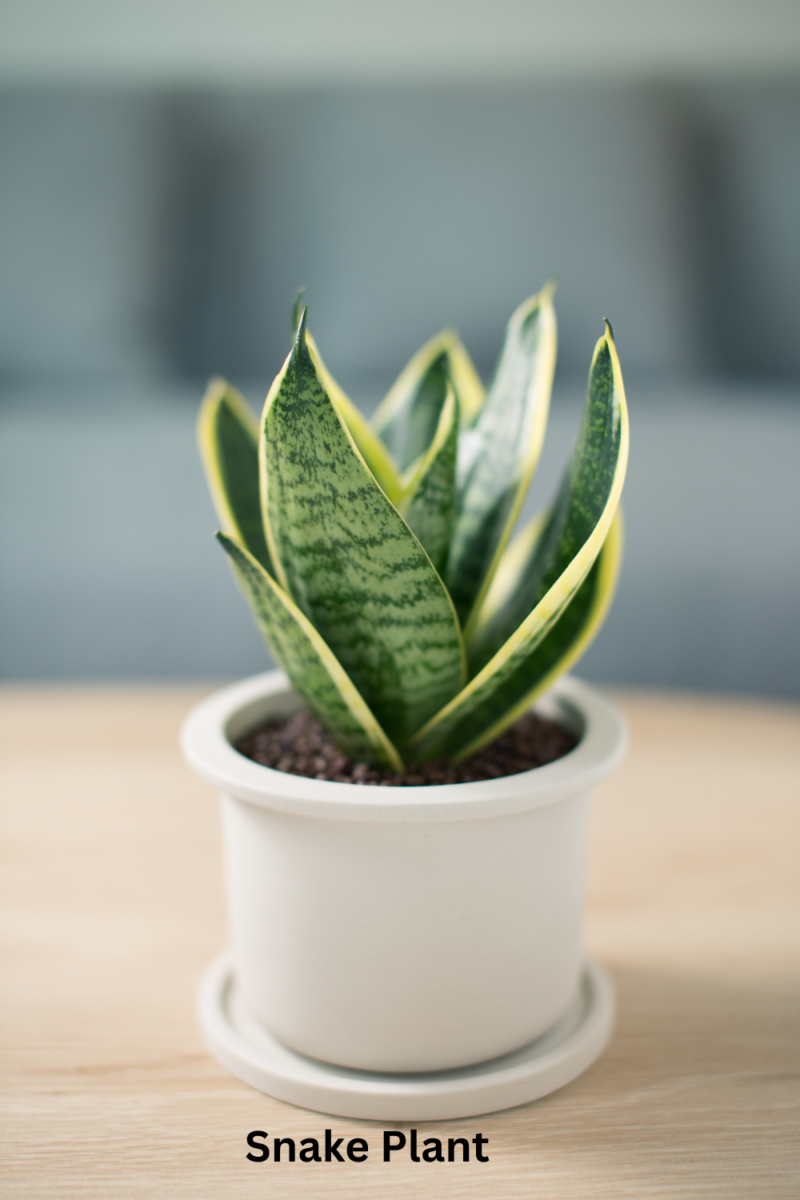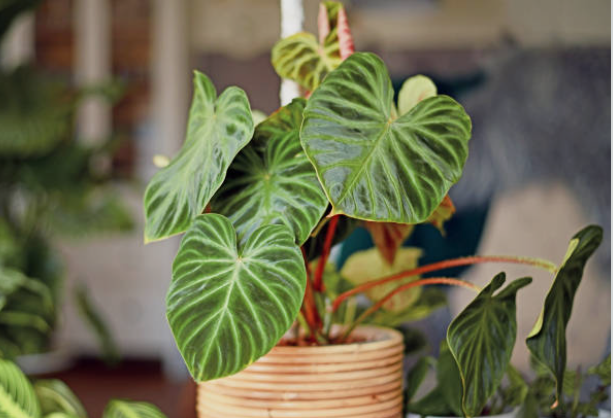Houseplants are more than just decorations.
They bring life, improve air quality, and give a sense of accomplishment.
Many first-timers feel scared to care for them.
This guide is here to help!
We’ll cover the best plants for beginners, care tips, and tools for success.
Why Houseplants Are Perfect for Beginners
Owning houseplants has many benefits:
- Improved Air Quality: Some plants clean the air, making your home healthier.
- Stress Reduction: Caring for plants can lower stress and anxiety.
- Aesthetic Appeal: Plants add color, texture, and life to your space.
- Educational Opportunity: Plants teach patience and responsibility.
Beginner-friendly plants are easy to care for.
They’re perfect for those new to plant care.
Let’s explore the best options for you.
Top 10 Houseplants for First-Time Owners
Here’s a list of plants that are hard to kill. Each one has care tips for success.
| Plant Name | Light Requirements | Watering Needs | Special Features |
|---|---|---|---|
| Snake Plant | Low to bright indirect | Infrequent (2-3 weeks) | Air-purifying, extremely hardy |
| Pothos | Low to bright indirect | Weekly | Fast-growing, tolerates neglect |
| Spider Plant | Low to bright indirect | Weekly | Produces baby spiderettes for propagation |
| ZZ Plant | Low to medium indirect | Every 2-3 weeks | Tolerates drought and low light |
| Peace Lily | Low to medium indirect | Weekly | Features white blooms, air purifier |
| Aloe Vera | Bright indirect | Every 2-3 weeks | Dual-purpose: decorative and medicinal |
| Rubber Plant | Bright indirect | Weekly | Bold statement plant, low maintenance |
| Jade Plant | Bright indirect | Infrequent (2-3 weeks) | Hardy succulent, compact size |
| Chinese Evergreen | Low to medium indirect | Weekly | Adapts to various conditions |
| Philodendron | Low to bright indirect | Weekly | Heart-shaped leaves, fast-growing |
Let’s dive into why these plants are great for beginners.
1. Snake Plant (Sansevieria)

This plant can thrive in almost any light. Water it only when the soil is dry. It’s perfect for those who forget to water. Its leaves add a modern touch to any room.
2. Pothos (Epipremnum aureum)

Pothos is known as the “Devil’s Ivy.” It’s forgiving and grows quickly. It can handle low light, making it great for dark spaces. Plus, it’s easy to propagate by cutting a stem and placing it in water.
3. Spider Plant (Chlorophytum comosum)

Spider plants have green and white-striped leaves that cascade down. They are tough, do well in indirect light, and grow baby plants called “spiderettes.
4. ZZ Plant (Zamioculcas zamiifolia)

Repot Your ZZ Plant
The ZZ plant has dark green, glossy leaves. It’s good at handling drought and low light. It’s perfect for those who don’t have a lot of time to care for plants.
5. Peace Lily (Spathiphyllum)

Peace lilies are beautiful with their white flowers. They tell you when they need water by leaning a bit. They clean the air but need careful watering.
6. Aloe Vera

Aloe Vera loves bright, indirect light. Its gel can heal burns and skin problems. It’s useful and looks good too.
7. Rubber Plant (Ficus elastica)

Rubber plants have big, waxy leaves. They like bright indirect light but can handle less light too.
8. Jade Plant

How To Grow Jade Plants
Jade plants are small and have thick leaves. They need little water and can live for years with little care. They’re great for small spaces.
9. Chinese Evergreen (Aglaonema)

Chinese evergreens have different leaf patterns. They can handle low and medium light. They’re easy to care for.
10. Philodendron

Philodendrons are easy to care for and grow in many light conditions. Their vines are perfect for hanging baskets or shelves.
Essential Care Tips for Beginners
Even though these plants are easy to care for, some basic tips will help them thrive:
1. Watering Basics
- Check the soil before watering; most plants prefer their topsoil to dry out.
- Use pots with drainage holes to prevent root rot.
2. Light Requirements
- Identify the light conditions in your home (e.g., low light, medium light, bright indirect light).
- Place plants according to their light needs.
3. Soil and Potting
- Use a well-draining potting mix.
- Re-pot your plant when it outgrows its container, typically every 1-2 years.
4. Fertilizing Tips
- Fertilize during the growing season (spring and summer) using a diluted liquid fertilizer.
- Avoid fertilizing during winter when plants are dormant.
5. Watch for Common Problems
- Yellowing leaves: Often a sign of overwatering.
- Droopy leaves: May indicate underwatering.
- Pests: Look for common culprits like spider mites or fungus gnats and treat them.
Common Myths About Houseplants
Let’s debunk some misconceptions that may deter beginners:
- “All houseplants need daily watering.”
- Truth: Most houseplants prefer infrequent watering. Overwatering is one of the leading causes of plant death.
- “Houseplants can survive in complete darkness.”
- Truth: While some plants tolerate low light, all plants need at least some indirect light to photosynthesize.
- “More fertilizer equals better growth.”
- Truth: Over-fertilizing can harm your plant’s roots and lead to salt buildup in the soil.
https://www.youtube.com/watch?v=s0lBq3vQrhY
Tools and Accessories for Plant Care
Having the right tools makes plant care easier:
1. Essential Tools
- Watering Can: Opt for one with a narrow spout for precise watering.
- Moisture Meter: Helps determine when to water.
- Pruning Shears: Ideal for trimming dead leaves and stems.
2. Optional Accessories
- Humidity Tray: Keeps tropical plants happy by increasing humidity.
- Pebble Tray: Prevents waterlogging while adding a decorative touch.
- Plant Care Apps: Apps like Planta or Blossom offer care reminders and tips.
Conclusion
Starting your houseplant journey does not have to be daunting.
The plants listed here are resilient, forgiving, and perfect for first-time owners.
With a bit of care and observation, you’ll soon have a thriving indoor garden that brings joy and serenity to your space.
Don’t wait, pick your favorite plant from the list, and start your green-thumb adventure today!
Have questions or experiences to share? Leave them in the comments below.
General Houseplant Questions
-
Why should I get houseplants as a beginner?
Houseplants improve air quality, reduce stress, and enhance your space’s aesthetics. Beginner-friendly plants are low-maintenance and forgiving, making them perfect for first-timers. -
Are houseplants really hard to kill?
Some are! The plants listed in this guide (like Snake Plants, Pothos, and ZZ Plants) are hardy and can tolerate occasional neglect. -
Do I need a lot of space for houseplants?
No! Many beginner-friendly plants (like Jade Plants or Spider Plants) are compact and fit well on desks, shelves, or windowsills.
Plant Care & Maintenance
-
How often should I water my houseplant?
It depends on the plant, but a good rule is to check the soil—water only when the top inch feels dry. Overwatering is more harmful than underwatering. -
What’s the best light for my houseplant?
Most beginner plants thrive in bright indirect light, but some (like Snake Plants and ZZ Plants) tolerate low light. Always check your plant’s specific needs. -
Why are my plant’s leaves turning yellow?
Yellow leaves often mean overwatering. Check the soil moisture and adjust your watering schedule. -
Do I need to fertilize my houseplants?
Only during the growing season (spring/summer). Use a diluted liquid fertilizer every 4-6 weeks, and avoid fertilizing in winter.
Choosing the Right Plant
-
What’s the easiest houseplant for a complete beginner?
Snake Plant, Pothos, or ZZ Plant they’re nearly indestructible and thrive with minimal care. -
Which houseplant is best for low-light rooms?
ZZ Plant, Snake Plant, or Chinese Evergreen—they adapt well to low-light conditions. -
Are there houseplants that help purify the air?
Yes! Snake Plants, Peace Lilies, and Spider Plants are known for their air-purifying qualities.
Troubleshooting & Common Issues
-
My plant looks droopy what should I do?
Droopy leaves usually mean underwatering. Give it a thorough drink, and it should perk up in a few hours. -
How do I know if my plant has pests?
Look for tiny webs (spider mites), white fluff (mealybugs), or flying gnats (fungus gnats). Wipe leaves with neem oil or insecticidal soap to treat them. -
Should I repot my houseplant?
Repot when roots grow out of drainage holes or the plant stops growing. Use a slightly larger pot with fresh soil.
Tools & Accessories
-
What tools do I need to start caring for houseplants?
A watering can, moisture meter, and pruning shears are helpful basics. Optional extras include humidity trays or plant care apps. -
Are self-watering pots good for beginners?
They can be helpful, but beginners should still learn proper watering habits first to avoid overwatering. -
I’ve killed plants before should I even try again?
Absolutely! Every plant parent makes mistakes. Start with hardy plants (like Pothos or Snake Plants) and learn as you go. -
Where can I buy beginner-friendly houseplants?
Local nurseries, garden centers, or even online shops (like The Sill or Etsy) offer great starter plants.
What’s your favorite beginner houseplant? Share your experiences in the comments!



